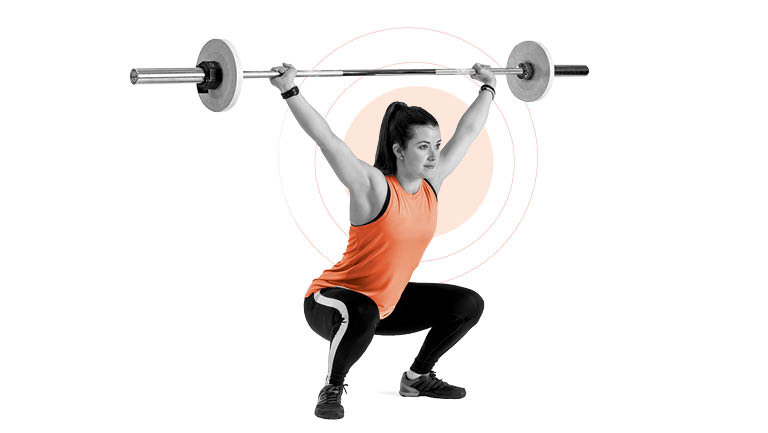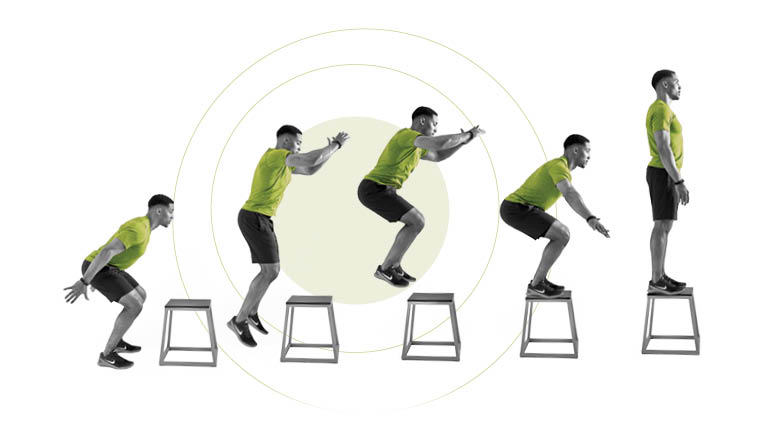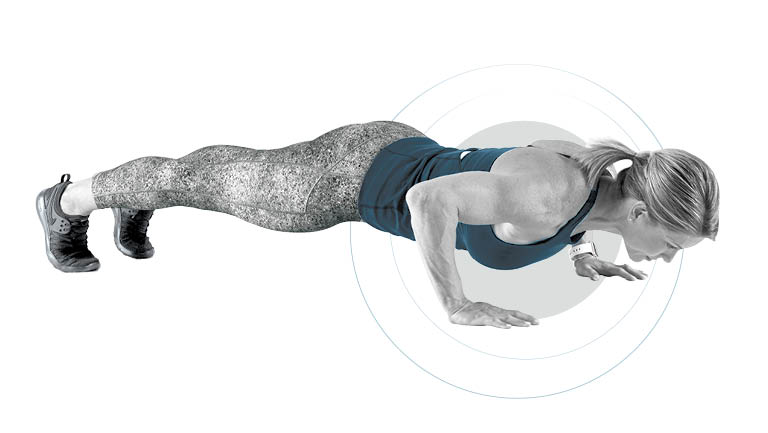How fit are you?
Chances are you have some idea, but the only way to truly measure your fitness level is by putting yourself to the test. Regular fitness testing can help you gauge whether your workouts are producing the results you want.
Many fitness experts recommend formally gauging your fitness level on an annual or semiannual basis with scientific tests administered by trained professionals using specialized equipment. These tests measure such things as strength, resting metabolic rate, body composition, your VO2 max and biomechanics. But other, do-it-yourself (DIY) fitness tests can offer a valuable complement to these more in-depth evaluations.
The best approach: Use professional fitness testing to establish a clear starting point, and then chart your progress on your own until the next round of scientific analysis.
Below, we describe five DIY fitness tests that measure a broad range of capacities, from raw endurance to anaerobic capacity. Experts explain what these tests tell you and how you can do them on your own — no PhD required. (There is however, some equipment required: a heart-rate monitor, a running track for running-based tests and a stationary bike with wattage feedback for cycling tests.) Note that all of these tests require substantial exertion and shouldn’t be undertaken unless you have a solid base of aerobic fitness (at least six weeks of consistent training).
1. Heart Rate Decoupling Test
Joe Friel, MS, an endurance sports coach and founder of TrainingPeaks.com, created this test to easily assess raw endurance, or your capacity to exercise for an extended duration without tiring. A high level of raw endurance is essential in sports such as triathlon and distance running.
- Strap on a heart-rate monitor and run for at least 30 minutes or cycle for at least 90 minutes at a steady, moderate intensity.
- Exactly halfway through the workout, press the lap button on your heart rate monitor.
- After completing the workout, compare your average heart rate for the first half of the workout with your heart rate for the second half.
According to Friel, your second-half heart rate should be no more than 5 percent greater. (For more on using your heart-rate monitor, see “Master Your Monitor”.)
“It is normal for your heart rate to increase slightly during prolonged, steady-state exercise as fatigue develops,” says Friel. “But the fitter you are, the less it will increase.” He recommends that you do a heart-rate decoupling test during a long ride or run once a week as part of your normal training. Try to get that second-half heart rate down to within 5 percent of the first-half heart rate.
2. Lactate Threshold Test
The lactate threshold is the exercise intensity at which lactate, a secondary muscle fuel, begins to accumulate rapidly in the blood because it’s being produced faster than it’s being used. Exercise scientists have long debated the definition and meaning of the lactate threshold, but one thing is certain: It is a very powerful predictor of endurance performance.
In clinical environments, the lactate threshold is determined through a graded exercise test (a workout in which the intensity increases incrementally every few minutes) combined with blood draws. Typically, the intensity level at which the blood lactate concentration reaches 4 millimoles per liter (mmol/L) is marked as the lactate threshold.
Troy Jacobson, national director of endurance sports training for Life Time Fitness, is among those experts who believe it’s possible for athletes to find their lactate threshold on their own with a functional test requiring no needle pricks. In trained athletes, Jacobson says, lactate threshold intensity is roughly the highest intensity that can be sustained for 60 minutes. Since going all-out for 60 minutes is one killer workout, Jacobson instead uses a 20-minute max effort that is then adjusted to estimate the result of a 60-minute effort.
- Wearing a heart-rate monitor, begin with a gentle warm-up of 10 to 15 minutes, either on foot on a measured course or on an indoor bike trainer that provides power data (watts).
- After completing your warm-up, run or ride as fast a pace as you can sustain for 20 minutes. Be sure to pace yourself so that you don’t slow down before the 20 minutes are up.
- Finally, cool down for at least five minutes.
Note your average running pace, cycling power, and/or heart rate for the 20-minute max effort. Adjust these numbers downward by 5 percent to determine your lactate threshold numbers. For example, if your average heart rate in the test was 179 bpm, your lactate threshold heart rate is approximately (179 x 0.95 =) 170 bpm. “This is a repeatable benchmark test that any conditioned athlete can perform every six to eight weeks to assess changes in fitness,” says Jacobson.
3. Maximum Aerobic Pace or Power Test
One of the major performance benefits of endurance training is greater economy of movement. This means that your body uses less energy to move at any given speed and is able to go faster at any given level of energy expenditure. With a heart-rate monitor, you can measure this improvement: Over time, it will show that you are able to go faster and faster at a fixed heart rate.
Some coaches use a protocol known as the maximum aerobic pace or power test to measure movement economy. To do it, you must first determine your lactate threshold heart rate using the lactate threshold test described below. You also need a measured course (such as a 400-meter track) to do the running version of the test or an indoor bike that measures power output (watts) to do the cycling version.
- Once you’ve determined your lactate threshold heart rate, start the test with a warm-up that elevates your heart rate to 10 beats per minute below your lactate threshold heart rate.
- Next, cover a fixed distance (one to five miles for running, five to 20 miles for cycling) at that same heart rate, keeping it as steady as possible.
- After completing the distance, divide the distance by the time to determine your maximum aerobic running pace; or, if you’re on the cycle, divide the average watts by the time to determine your maximum aerobic cycling power.
Repeat this test roughly once every four weeks, suggests Friel. “If you’re training effectively, you will find that you run or bike a little faster at the same heart rate,” he says. This trend shows that your movement economy is improving.
4. VO2 Max Speed Test
The two most important physiological variables in endurance sports are VO2 max, which is the maximum rate at which your body is able to consume oxygen during cycling, running, or another activity; and economy, which is the rate at which your body uses oxygen at any given speed. Having a high VO2 max is of little use if your economy is poor, because you won’t be able to reach a very high speed before you hit your personal oxygen limit. Therefore, determining running speed at VO2 max and cycling power at VO2 max factors in both VO2 max and economy, and as such is a powerful performance predictor.
French exercise physiologist Veronique Billat created a simple running self-test for VO2 max:
- Warm up on a treadmill, then increase your pace to a brisk but comfortable speed for two minutes.
- Next, increase your speed by 1 mph and run for two minutes.
- Continue in this manner until you rate the effort as difficult, and then raise the speed 0.5 mph every minute. Continue until you can no longer increase the speed, and then cool down.
- The fastest speed you achieve is your VO2 max running speed.
The test also can be adapted to cycling: To determine your VO2 max cycling power, measure the highest wattage output you can sustain for one minute on an indoor bike trainer.
Repeat the test every four to six weeks to monitor improvement. Your VO2 max running speed or VO2 max cycling power gradually will increase as your fitness improves.
5. Anaerobic Capacity Test
For many years, exercise scientists have used something called the Wingate test to measure anaerobic capacity, or the amount of work an athlete can perform in sustained maximal bursts. The original Wingate test requires a special type of exercise bike, but coaches such as Friel regularly use similar tests that don’t require special equipment.
Anaerobic capacity is essentially the fastest speed or highest power output you can sustain for 30 seconds. To determine your anaerobic running capacity:
- Warm up for five to 10 minutes, and then complete three to four all-out sprints of 200 meters (a half lap around a standard track) and rest for three to four minutes after each.
- Time each sprint.
- Divide 200 meters by your best time to determine your anaerobic running power in meters per second.
To test anaerobic cycling capacity:
- Warm up for 10 to 15 minutes on an indoor bike trainer that provides power data.
- After completing the warm-up, complete three to four all-out sprints of 30 seconds and rest for three to four minutes after each.
- Note your wattage number at the very end of each sprint.
- The highest number at the end of any of the three to four sprints is your anaerobic cycling capacity.
“Anaerobic power is more important for athletes who specialize in shorter races, but it’s still relevant for endurance athletes who race long,” says Friel, who notes that anaerobic power comes into play during surges and finishing sprints. So if you are a middle-distance runner, sprint triathlete, or criterium cyclist, you’ll want to test your anaerobic power frequently — every four weeks or so — and make sure it’s increasing. If you’re a long-distance endurance athlete, test your anaerobic power every six to eight weeks and make sure it does not decrease despite your emphasis on longer, slower training.
Each time you test, track your numbers in a notebook. The improving markers will assure you that you’re headed in the right direction, or if you aren’t seeing as much progress as you’d like, these tests will alert you to areas where you need to adjust your training to maximize performance. Either way, regular testing provides the kind of accountability that leads to a lifetime of good results.
This article originally appeared as “Test Your Endurance” in the June 2009 issue of Experience Life.





This Post Has 0 Comments